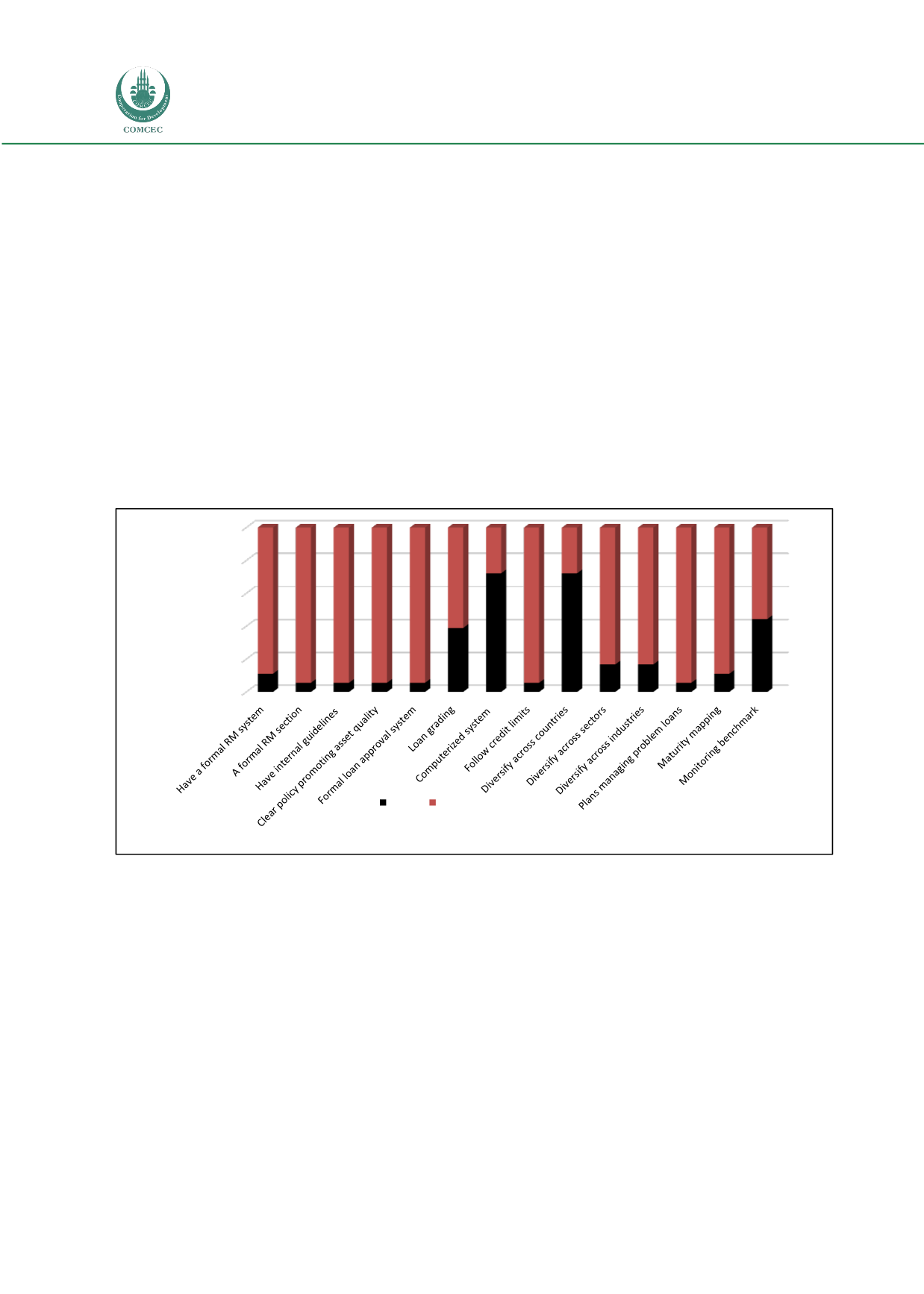

Risk Management in
Islamic Financial Instruments
112
5.4 RISK MANAGEMENT ENVIRONMENT
5.4.1 Establishing an Appropriate Risk Management Environment, Policies
and Procedures
The board of directors is responsible for the overall objectives, policies and strategy of the
bank towards risk and its management policies. The risk appetite should be communicated
throughout upper management. The board of directors should ensure management takes the
necessary actions to identify, measure, monitor, and control these risks. Senior management is
responsible for establishing policies and procedures that manage risk according to the board
of director’s appetite for risk. The policies and procedures include maintaining a review
process, limiting risk taking, establishing an adequate system of risk measurement, promoting
a comprehensive reporting system, and an ensuring an effective system of internal controls.
Figure 5.3: Establishing Strong Risk Management Environment
Figure 5.3 shows that most of the banks have already established a strong risk management
environment. Loan grading has been a problem for 39 percent of the banks. Loan grading helps
bank identify the riskiness of the borrowers. A problem with this grading system will lead to
more defaults, which can be translated into higher credit risk. A massive drawback of the poor
internal mechanism is that over 70 percent of the banks did not have computerized risk
management tools. Diversification across countries, sectors, and industries has been another
important problem area. The IFIs were not internally diversified. Also, the problem of
monitoring benchmark rates has contributed to mark-up risk. Since IFIs do not have efficient
human capital and the use of computers was very limited, the IFIs reported facing difficulties
with operational and mark-up risks.
0
20
40
60
80
100
88,9
94,4
94,4
94,4
94,4
61,1
27,8
94,4
27,8
83,3
83,3
94,4
88,9
55,6
No (%)
Yes (%)

















